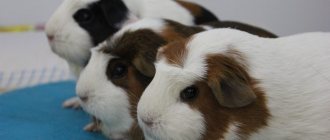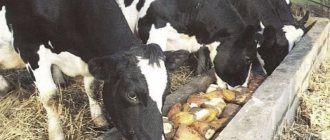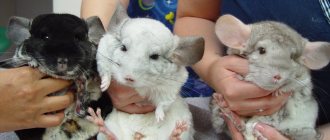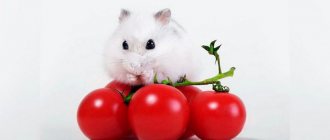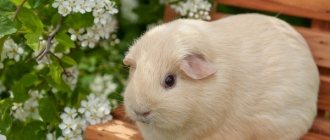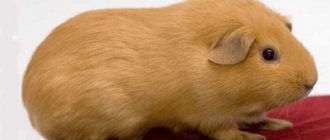A brief excursion into the history of guinea pigs
In Europe, they learned about these animals only in the 16th century, but in their ancestral homeland of South America, pigs, whose name in the local dialect sounds like cavy, began to be domesticated 5 thousand years ago. Furry animals played an important role in the daily life of Indian tribes, as evidenced by images of rodents that have survived to this day in rock paintings and ancient household items.
Pigs trace their origins back to ancient times.
True, the fate of the pigs themselves was unenviable. After all, the local population used these cute creatures as a source of meat and for sacrifice to their bloodthirsty gods. There were also special rituals in which the tribal priests made predictions about the future harvest using the entrails and blood of animals. Pigs with black color were especially valued and were used to treat any disease. Although the fate of black individuals was no better than that of ordinary relatives: the patient’s body was “wiped” with a rodent, after which the pig was immediately killed, and a diagnosis was made based on the internal organs and treatment was prescribed.
Europeans learned about the existence of guinea pigs after Columbus discovered America. Sailors and adventurers, who flocked to the lands of the New World in search of riches, returned home with exotic animals. In Europe, these furry rodents immediately became popular pets among aristocrats and nobles. Society ladies appeared at receptions with baskets from which the curious face of a pig peeked out, and during dinner parties the animals sat decorously on velvet pillows or on the laps of the hostesses.
Why Europeans called these animals pigs is not entirely clear. Some scientists suggest that rodents got their name due to the similarity of their structure to real pigs. Other experts believe that the name of these animals is associated with their ability to make grunting sounds and high-pitched squeals.
The life of modern guinea pigs in their homeland is almost the same as that of their distant ancestors. Both in the old days and now in the countries of South America they continue to raise these creatures for meat, slaughtering millions of pigs a year. And in the civilized world, cute rodents are used for laboratory experiments, which is also not very humane.
And only ordinary people were able to appreciate the beauty and friendly disposition of guinea pigs, and they keep them not for practical purposes, but for the soul. And thanks to their unpretentiousness, peaceful attitude towards humans and funny habits, these creatures have been and remain one of the most popular pets.
Guinea pig: general characteristics
These animals belong to the class of herbivorous mammals from the order of rodents. They represent the only genus of pigs, and belong to the pig family, which also includes the Patagonian hares, capybaras and mocos (mountain pigs).
Wild guinea pig
The animals have an elongated cylindrical body, short legs and a small, almost invisible tail. The body length ranges from 25-35 cm, and they weigh from 800 g to 1.5 kg. The fur of rodents is soft, fluffy and dense. Wild cavyas are colored in solid gray, brownish or black tones. The color palette of decorative pigs is more diverse, and among them there are individuals with white, reddish and even lilac colors, and breeds with a combination of 2-3 shades have also been bred.
There is a subspecies of giant guinea pigs that are bred as farm animals in South America. The body length of these rodents reaches 50 cm, and they weigh as much as 4 kg.
Pigs living in the natural environment differ from their domestic relatives not only in their more inconspicuous color. Wild cavias have a more muscular physique, they are agile and agile, which is not surprising, because the only chance to survive among formidable predators is to escape. Pigs are able to run and jump quickly, and easily climb trees and rocky slopes. These animals are excellent swimmers, although they do not like water, and unless absolutely necessary they will not climb into an open body of water.
In the wild, guinea pigs have a lifespan of about 5 years. Decorative pigs live longer, on average from 8 to 10 years.
Elena
Ask a Question
Question to the expert
Do guinea pigs store food like hamsters?
No, neither in the wild nor at home do pigs store food in reserve. If the rodents' habitat runs out of food, they simply move to a new territory with an abundance of vegetation.
Varieties of coat color
Friendly and affectionate animals are popular as pets. And it doesn’t matter whether the pig in front of you is shaggy or has smooth hair. The breed is united by a good disposition, curiosity and cheerful character.
Looking at the breeds from the photo, you can see how varied the colors of these rodents are.
- Agouti. Common color of long-haired and short-haired animals. Each hair is divided into 3 cents. It looks very impressive. There are chocolate, copper, cream, yellow, golden, silver shades.
- Dalmatians. Black peas are scattered on the pig's white coat. Smaller ones are on the abdomen. On the sides and back they are large and expressive.
- Buffalo color or buffs. These are pets of a rich brownish-yellow color. They can be plain or with spots.
- Dutch. Happens only in short-haired rodents. These are bicolor animals: black and white or brown and white.
- Tortoiseshell. A spectacular tri-color coat, on which white, red and black spots clearly stand out. As a joke, an animal with this color is called a “cake breed pig.” Only rodents with short hair can be tortoiseshells.
- Roan. Animals of this color are extremely attractive. White hairs are included in the main color. The appearance of such pets is noble and elegant.
- Tan. Black fur dominates, with piquant “tan marks” visible around the eyes and on the belly. A very beautiful color and it is rare.
- Brindle. This is the name of the animals whose fur coat is made up of black and red colors, which run in even stripes along the body.
- Fox and Tan. Animals with this color were bred relatively recently. Foxes have white edging on the face, ears and around the eyes, as well as white tan markings on the belly. Tans have black colors instead of white.
- Himalayan. It's nice to have a pig with such an original color. The fur of the animal strongly resembles a Siamese cat. When you look at such a rodent from afar, you can easily confuse the animals.
The choice of colors and their variations is huge. Photos and names of rodents with different colors can be found on the websites of large nurseries.
Natural habitat of guinea pigs
In the wild, these animals are found only in South America. The original homeland of guinea pigs is the foothills of Chile and the desert plains of Peru. But over time, furry rodents began migrating deep into the South American continent, and populated the territories of countries located in the center, and also spread to the south and north.
Cavias inhabit almost the entire territory of South America
Guinea pigs are found in countries such as:
- Argentina;
- Brazil;
- Bolivia;
- Colombia;
- Venezuela;
- Guiana.
These animals prefer regions with a temperate climate, but feel quite comfortable when the temperature fluctuates from +7 to +30 degrees. Guinea pigs adapt well to any type of terrain. Cavias settle in swampy and humid tropics, arid steppes, at the foot of mountains and cliffs, and are not found only in snowy high mountain regions.
What do wild guinea pigs eat?
Cavias belong to the order of herbivorous rodents, and their diet consists exclusively of plant foods. Basically, these animals eat a variety of herbs, but if possible, they will not refuse tubers, roots, juicy fruits and nuts.
Pig feasting on a juicy stalk of grass
The guinea pig menu includes:
- Fresh grass;
- Flowers, stems, leaves, plant seeds;
- Edible roots and tubers of plants;
- Leaves and branches of bushes;
- Berries and tropical fruits, especially loved by sugar apples, guavas and American apricots;
- Brazil nuts, pistachios;
- Hay, dry grass.
In the wild, these animals drink little water, getting the necessary liquid from succulent plants, fruits and berries.
Guinea pigs try to stay away from human settlements, but if they lack food, they can raid fields to profit from grain and vegetable tubers. But unlike European rodents, they do not cause much damage to farmers. Kavyas also do not disdain to rummage through garbage containers in search of waste, willingly eating cabbage leaves, carrot tops and sweet potato peelings.
Reproduction and raising of young
Sexual maturity in wild guinea pigs occurs quickly. Males reach reproductive age at 2-3 months, and females are ready for procreation after 1 month of life. But the body of these rodents is fully formed before six months, so they mate no earlier than they are 5-6 months old.
Cavias can reproduce throughout the year, but often mate only in the warm season, when there is enough food around, which creates more favorable conditions for raising young animals.
In a clan of wild guinea pigs there is only one dominant male, and they do not have such concepts as mating games and battles for a female. The leader of the pack covers all his furry “wives”, who signal their readiness to become a mother in heat, leaving odorous marks for the male.
The baby will learn from his mother's experience of surviving in the wild
The general gestation period for guinea pigs is 2-2.5 months, and in one year females can give birth 3-4 times. There are from 1 to 8 cubs in one litter, their number depends on the age of the expectant mother. Young females give birth to 2-3 babies; the brood of more mature females can have from 4 to 8 offspring.
Newborn pigs are born well developed. Their eyes and ear canals are open, they have molars, and their entire body is covered with soft fur. The cubs grow very quickly, and already on the 3rd day of life they try juicy green grass for the first time, although they continue to feed on their mother’s milk for the next week.
Young pigs have only 4 weeks to learn how to get their own food, recognize the signals of their relatives, and distinguish the sounds and smells made by predators. Upon reaching 1 month, the cubs must leave their native clan and begin an independent life. Young cavys have to find their own territory and form a new family, and it is at this stage that most of the pigs die in the clutches of predatory animals.
Skinny
When talking about what types of pigs there are, it is impossible to ignore hairless animals. Skinny appeared as a result of mutation. But it spread throughout the world only after scientists were able to increase the immune powers of the body of these animals. To maintain a healthy body temperature, skinnies eat a lot.
It has a small fluff on its face and paws, which completes the unusual appearance of the animal.
Those who want to have such a pet need to be prepared for the fact that it requires warmth and a special diet.
Natural enemies of pigs
Guinea pigs have plenty of enemies in the wild. After all, small defenseless cavias become easy prey for both terrestrial and feathered predators. Therefore, furry rodents always have to be on alert in order to warn the rest of the group in case of danger and give them a chance to survive.
A wild guinea pig must always remain alert in order to spot a predator in time
The main enemies of guinea pigs are representatives of the cat family. The animals are hunted by the mysterious jaguarundis and spotted ocelots. The wild Chilean cat also hunts pigs. And rodents living at the foot of the mountains can become victims of such a predator as the Andean cat. And of course, these creatures have to be wary of the formidable pumas, who will never miss the opportunity to feast on the tender meat of the cavy.
During night feeding, guinea pigs often fall into the claws of owls, eagle owls and hawks. And in the forest thickets and among the rocky cliffs, snakes lurk in anticipation of prey, which with a lightning-fast throw overtake the furry animal, killing it with their poison.
Behavior
Cavias are school animals. The flock consists of 10 to 25 females and one male. The flock lifestyle is due to greater survivability and convenience for all members of the pack. Someone in the family must always be on guard while other members may be feeding offspring, storing food, or simply sleeping. Rodents cannot survive alone in the wild. Animals in a flock allow each other to rest. In case of danger, the “watchmen” make alarming sounds.
Small animals can make a wide range of sounds. With their help, communication occurs in flocks. A soft purr or sullen grunt allows the inhabitants of the flock to understand how their neighbors feel about them.
Wild pigs are clean animals in nature. They need to take care of cleanliness to avoid predators.
Within the pack, females live peacefully. They take care of the babies and each other together. Quarrels can only occur between males. They fight for leadership in the pack. The losing male must leave the pack and leave the territory. Having left the old family, the animals organize their own pack.
Keeping guinea pigs at home
Just because pigs are considered one of the most low-maintenance pets, doesn't mean you can't afford to take care of them. Yes, these rodents do not need to be walked, bathed or combed, but they must live in optimally comfortable conditions.
The guinea pig's home should be spacious and comfortable
Newborns
It is also interesting to know what size a guinea pig should be at birth. The cubs that are born have a height of 5 to 10 cm. In small breeds, the weight usually does not exceed 45–50 g, and in large breeds it reaches 100–120 g.
Much depends on the number of newborns in the litter. The more cubs a female bears, the smaller the size of each of them. Birth order also plays a role. Individuals born first are usually larger than others.
The size of the babies is also affected by the course of pregnancy in the female. If the guinea pig is healthy, then it can bear three large cubs, which at birth will weigh at least 100-120 g.
Cubs are considered newborns under 7 days of age. During this period they practically do not grow.
Pros and cons of keeping guinea pigs
Guinea pigs, like any pet, have their advantages and disadvantages. Therefore, the decision to get a cute rodent should be a responsible one, and not dictated by a momentary hobby. After all, keeping these animals has its own subtleties and nuances that every potential owner should study.
Owning a guinea pig should be a balanced and thoughtful decision.
The advantages of pigs include:
Inexpensive cost. Compared to chinchillas and exotic degus, the price of guinea pigs is more affordable.
Friendly and peaceful character. These pets do not have the habit of biting, so they can be kept for children.
Low maintenance requirements. Guinea pigs take care of their fur themselves; they do not need to be bathed or brushed (unless, of course, you have a long-haired show specimen).
Daytime lifestyle. Unlike their wild relatives, domestic pigs are active during the day and sleep at night and do not disturb their owners with noise and fuss in the cage.
High life expectancy. Decorative cavias live on average 8 years, and with good care they can reach 10 years of age.
The list of disadvantages includes:
Unpleasant smell. Pigs themselves do not smell, but if their home is not regularly cleaned, a pungent odor will emanate from the cage.
The need for constant communication. These animals quickly get used to humans and require attention.
A lot of trash. You will have to clean not only in the cage, but also near it, because cavities constantly rummage through the litter, scattering sawdust, hay and food around.
They can ruin things. Pigs are rodents after all, and they should not be allowed to roam freely around the apartment, as they will taste everything that comes their way.
Poor health. These animals are susceptible to various infections, cannot tolerate sudden changes in temperature, and are prone to digestive problems due to poor quality food.
How to distinguish a male from a female?
Not every breeder can distinguish a male from a female by genitals. It is especially difficult to determine the sex of a guinea pig if a person is encountering the breeding of these rodents for the first time. But this is quite possible and within the power of every breeder, if you take into account several nuances. So, how to determine the gender of a guinea pig - the main methods are presented below.
According to external signs and shape of the anus
To distinguish a male from a female by external characteristics, follow these steps:
- Carefully take your rodent and place it on your palm; if it does not fit, then hold your pet with your hand behind its back.
- Gently and not forcefully press on the lower abdomen so that the pet does not feel pain. The rodent skin can be moved up. In this case, in a male, you can feel the so-called flagellum, which is the penis. If you pressed on your stomach and it came out, then this is normal. In addition, the boy will definitely have a visible scrotum, located just below the foreskin.
- In the female, by pressing on the tummy, you can see the organ itself, which visually resembles the letter U, expanding towards the lower abdomen. It should also be noted that girls have much smaller genitals than boys.
By the anal sac
You can distinguish a girl from a boy by the anal sac; this method is one of the simplest in practice. To do this, place your rodent with its belly facing up. A boy's anal sac will be large and you will be able to see it clearly. In females, this organ is atrophied.
By litter
You can tell a boy from a girl by the type of litter.
In particular, you need to pay attention to the shape of the animal’s feces:
- The shape of the male litter is slightly bent at the corners and may vaguely resemble an arc with a groove.
- The litter of females does not have such a groove; usually their feces are even in shape.
According to other signs
It is quite difficult to determine the identity of a baby; it is easier to understand the gender of a pet when it has already grown a little. Girls will always behave calmer and friendlier than boys. Males are males to show their dominant habits, sometimes attacking other males. In addition, boys often make sounds characteristic of pigs, similar to purring.
Females mount other pets only during sexual heat, but this period usually does not last longer than one day.
Pay attention to the dimensions of the pet. An adult male will be much larger than a female, in particular, we are talking about his head
The weight of a male can reach one and a half kilograms when living at home; as for girls, they usually weigh no more than 1.2 kg.
